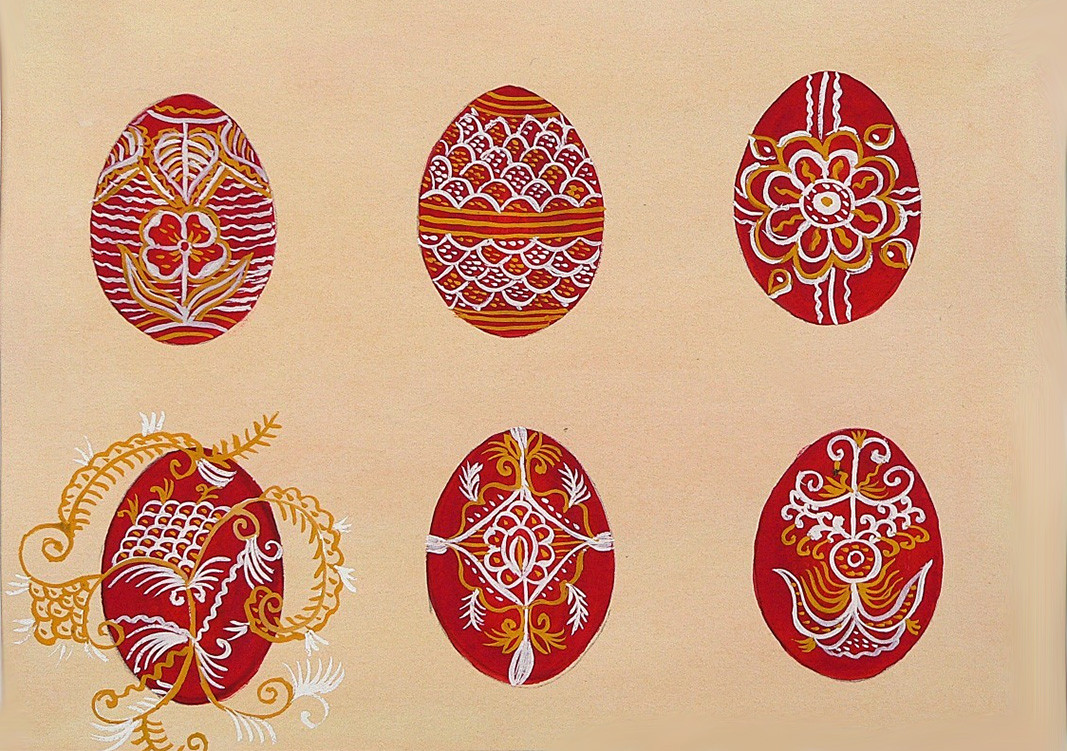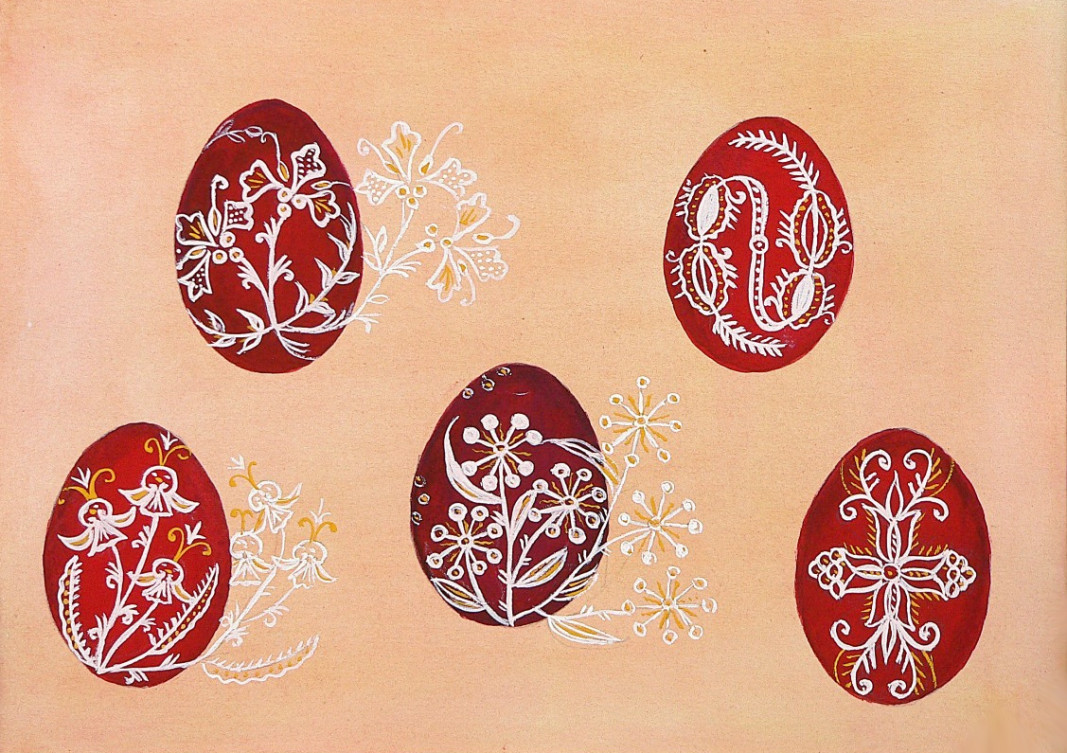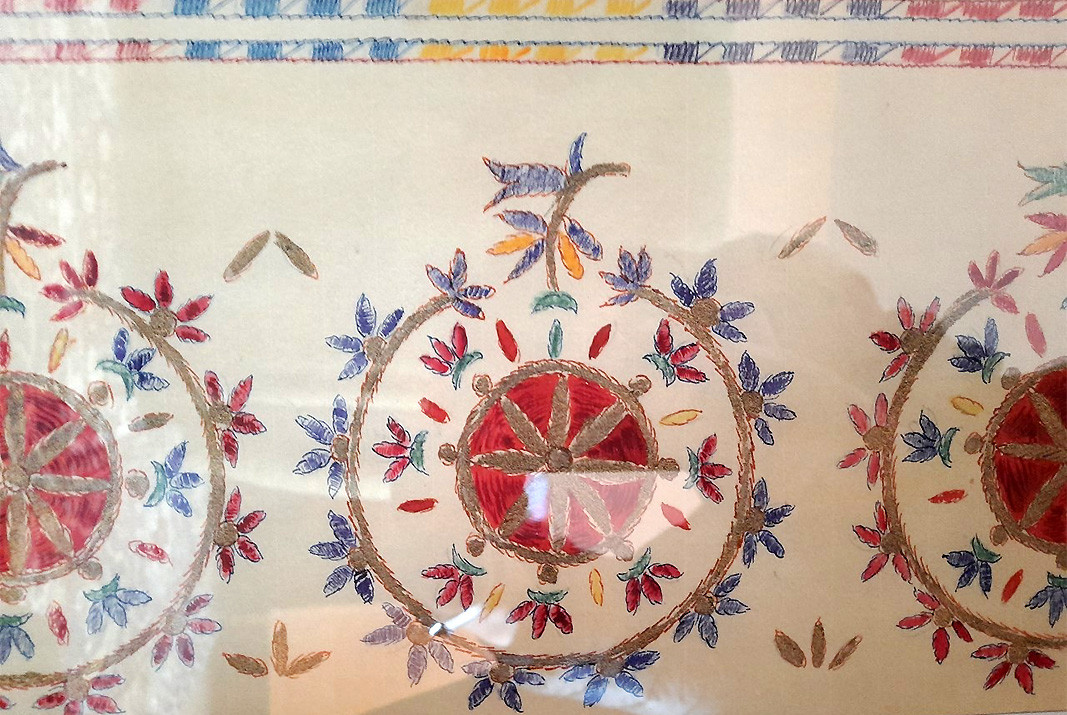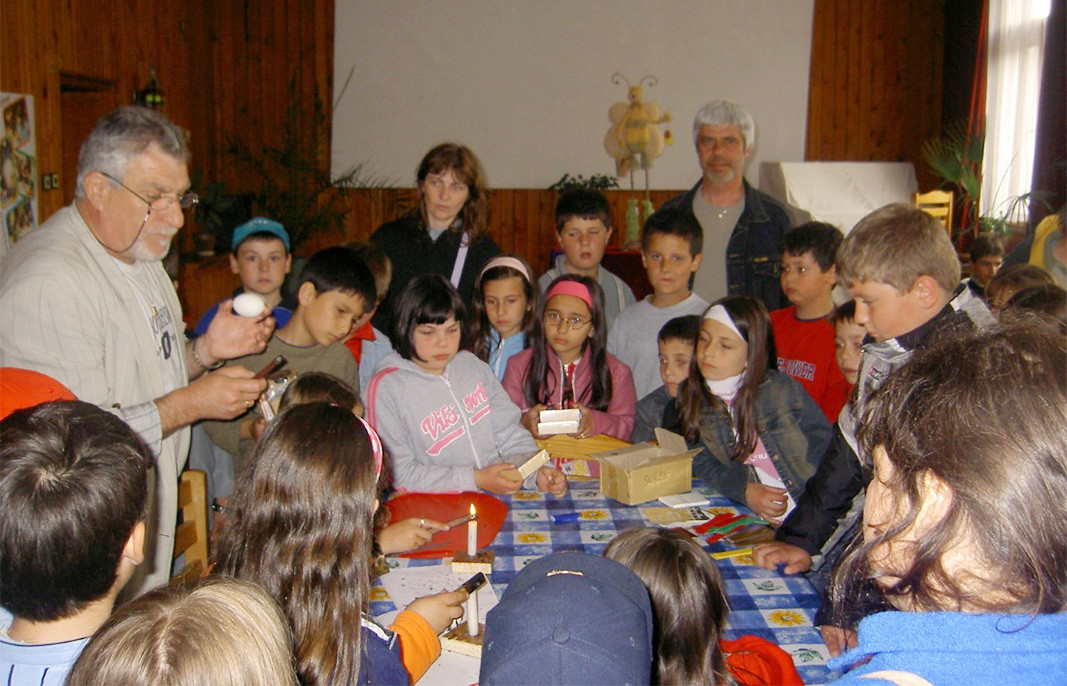The Museum of History in Velingrad owns the biggest collections and exposition of dyed eggs in Bulgaria. The credit for this goes most of all to Maria Malcheva, who helped seek out and preserve models from 70 and more years ago.
Maria Malcheva is an original artist. She was born on 21 November, 1899 in the village of Ludzhene, now part of the suburbs of Velingrad. She graduated from the local secondary school, and then went on to study at the Art Academy in Sofia. There, she met prominent Bulgarian artists and intellectuals and was involved in the founding of the Society of New Artists, later re-named Union of Bulgarian Artists. She died in Sofia on 16 May, 1986, leaving behind an incredible array of drawings of painted eggs, wedding kerchiefs and traditional socks.

In the 1950s, the dark times when the communist regime did not tolerate any religious celebrations, Maria Malcheva started visiting with old women in Velingrad and the surrounding area in search of Easter egg patterns.
“What she did is no precedent in the history of Bulgarian ethnography. Drawings such as these have been preserved going back to the turn of the 20th century. What Maria Malcheva did was a very accurate replica of the patterns used at the time. It was very difficult in those times to choose a practice, even if it was so close to folklore tradition, such as the dyeing Easter eggs. Nevertheless, Maria Malcheva made it a point to preserve the models used in Kamenitsa, Ludzhene and Rakitovo,” says Georgi Kumanov, chief curator of the Museum of History in Velingrad.

There are 58 display boards with 107 drawings of dyed eggs by the talented artist at the Velingrad History Museum. More than 200 exquisite patterns are drawn in astonishing detail, and the egg is shown from all sides. Typically, the dyed eggs of Velingrad are red with white ornamentation, painted all over using a special pen and wax.

“The sign of the cross was painted onto the egg, and plant ornaments and rosettes around it,” Georgi Kumanov explains.
Easter is connected with the sun, that is why swastikas are depicted here, with a multitude of other ornaments added to them. There are some very intriguing elements – like the stylized plant ornaments, or the stairway to the sky. Maria Malcheva’s drawings also feature some zoomorphic figures, such as butterflies as the symbol of the human spirit, or doves.”

The Museum is in possession of one more very valuable collection, donated by Maria Malcheva – 65 patterns of wedding kerchiefs and 25 patterns of colourful socks.
“Unlike the models for dyeing eggs, where the artist has noted the year in which she drew them, for example 1956, with the kerchiefs she has noted the year of the models themselves – 1830, 1850 – so we know the models are very old, and that gives us an idea of what traditional kerchiefs were like. Some of them are really beautiful and are quite old,” Georgi Kumanov says.

The tradition of Velingrad’s painted eggs is alive to this day, and Maria Malcheva’s drawings draw on the traditions that have come down to us from times long gone by. Some of the ancient ornaments are applied to this day, others are born of the imagination of the skilled egg painters of Velingrad.

Photos: History Museum Velingrad
Lazarus Saturday is widely known in Bulgaria as Lazarovden , celebrated by Orthodox Bulgarians on the day before Palm Sunday. The main rite is the lazaruvane - a traditional custom centred on themes of love and marriage. Girls over the age of 16,..
The historic town of Tryavna will celebrate St Lazarus' Day, traditionally held on the Saturday before Palm Sunday. The Bulgarian custom, known as lazaruvane , is closely linked to the themes of love and marriage and will be re-enacted this..
The feast of the Annunciation (Blagoveshtenie in Bulgaria) is a holy day , a symbol of God’s infinite mercy to people and especially to women, blessed to bear new life, but also an embodiment of the eternal human longing for something better in the..

+359 2 9336 661
